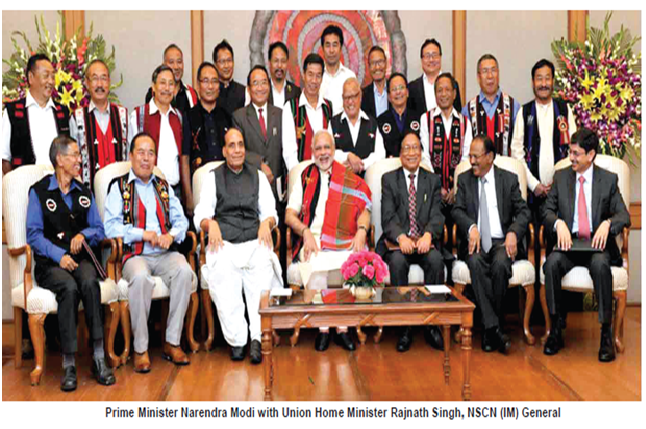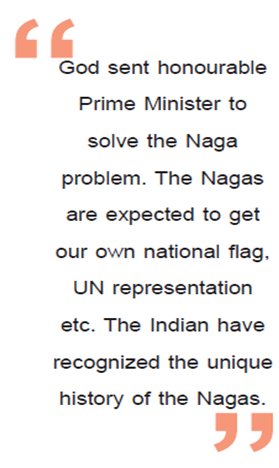
 It is a fact that the Framework Agreement signed on 3rd August 2015 between the Government of India and the Nationalist Social Council of Nagalim, NSCN (IM), which only lays down broad paramters towards arriving at an honourable settlement to the vexed Naga insurgency issue, is the most significant development in the insurgency ravaged politics of northeast India.
It is a fact that the Framework Agreement signed on 3rd August 2015 between the Government of India and the Nationalist Social Council of Nagalim, NSCN (IM), which only lays down broad paramters towards arriving at an honourable settlement to the vexed Naga insurgency issue, is the most significant development in the insurgency ravaged politics of northeast India.
28 months after signing, and Nagaland on the verge of electing its new government, this maybe a decisive moment for the Narendra Modi’s BJP to claim the price for settling the protracted Naga insurgency issue.
With Prime Minister Modi showing all eagerness to resolve the issue within a timeline, interculator, RN Ravi is frantically holding parlance with civil society leaders of Nagaland, Manipur, Asssam and Arunachal Pradesh, the four states who are all stakeholders in any agreement that the government of India concedes while giving in to the demands of the NSCN (IM).
 Although the 2015 Framework Agreement was a welcomed development as a precursor to lasting peace in the armed conflict troubled northeast India, the terms of the agreement were not revealed, raising speculation of a hidden agenda particularly amongst the non Naga communities of Assam, Arunachal and Manipur.
Although the 2015 Framework Agreement was a welcomed development as a precursor to lasting peace in the armed conflict troubled northeast India, the terms of the agreement were not revealed, raising speculation of a hidden agenda particularly amongst the non Naga communities of Assam, Arunachal and Manipur.
The NSCN IM, considered the most potent armed organization of the region, entered into ceasefire agreement with the government of India in 1997 and after 18 years of negotiations a framework agreement for peace was finally signed.
This development is also closely watched by the other armed groups operating in the entire region as its ability to address the concerns as well as strike an honourable deal to end conflict is bound to have bearings on the climate of conflict in the region that has been witnessing armed insurgency since 1947.
While NSCN (IM) has been persistent in its demand for some kind of self sovereignty and the integration of all Naga inhabited areas in the northeast under one single administrative unit, neighbouring states of Assam, Arunachal Pradesh and Manipur have firmly opposed any moves to disturb their territorial integrity in favour of carving out a greater Nagaland or Nagalim, the most cherished goal of the NSCN (IM).
The opposition to the schemes of greater Nagalim is particularly strong in Manipur as illustrated by the impact of 2001 Bangkok Declaration that extended the Ceasefire between Government of India and NSCN (IM) with the addition of the three words – ‘without territorial limits.’
Immediately after the Bangkok announcement, the people of Manipur perceiving it as a direct threat to their territorial integrity rose up in flames, demanding the withdrawal of the words ‘without territorial limits’. The State Legislative Assembly was burnt; most offices of Political Parties were targeted. Even the Chief Minister’s official residence cum secretariat was attacked. Only after 18 protestors lost their lives in police action and subsequent fall-out, the Government of India conceded and withdrew the three words.
United Committee Manipur, (UCM), is a civil body that literally rose out from the ashes of the June Uprising of 2001 and subsequently became a powerful body self ordained to thwart off any threats to Manipur’s territorial integrity.
Sunzu Bachaspatimayum
To read the further article please get your copy of Eastern Panorama March issue @http://www.magzter.com/IN/Hill-Publications/Eastern-Panorama/News/ or mail to contact @easternpanorama.in


